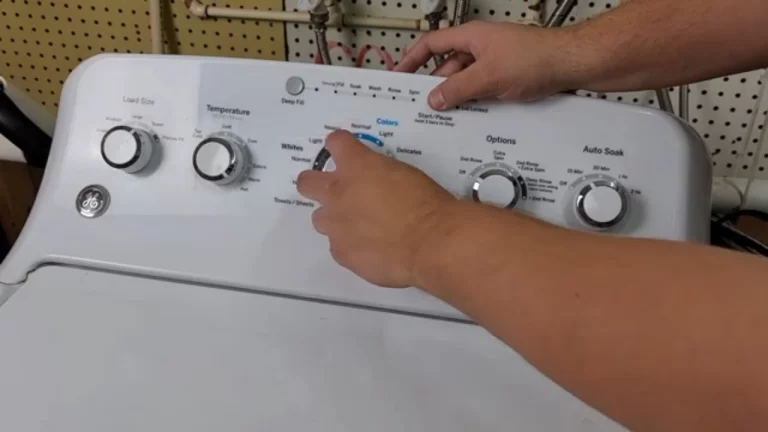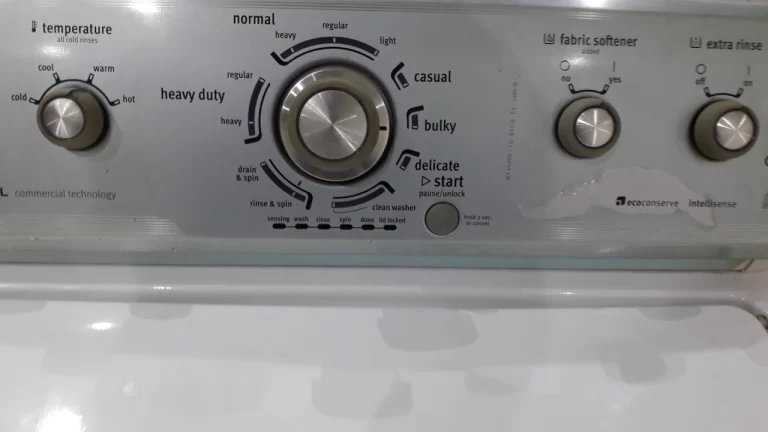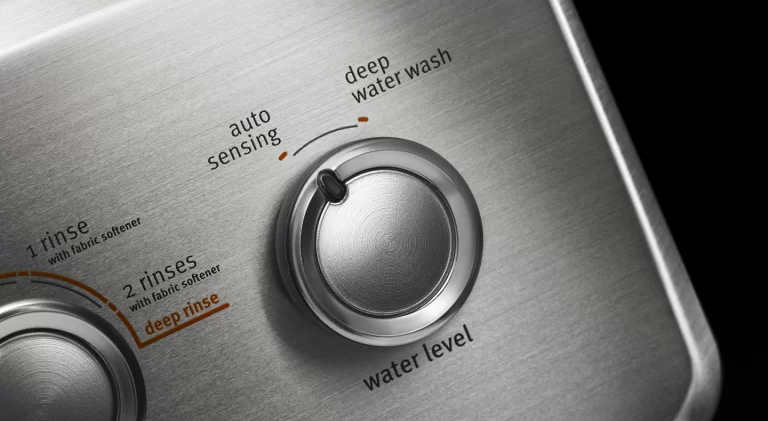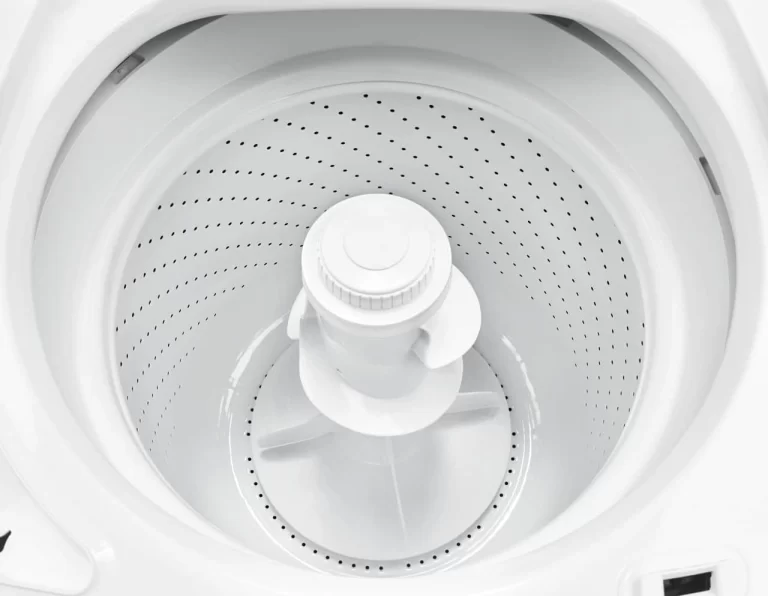Ever faced the frustrating issue of your Maytag washer stopping mid-cycle, full of water, leaving you with a pile of soggy clothes? Understanding what might be causing this can help alleviate your worries and assist in troubleshooting. In this comprehensive guide, we delve into the ten most common reasons for this issue and offer practical solutions to get your laundry routine back on track.
If your Maytag washer has stopped working and is full of water, the issue might be a clogged drain hose, faulty lid switch, malfunctioning pump, or broken drive belt. It could also be due to a defective timer, failed water-level pressure switch, or a control board issue. Consult a professional for accurate diagnosis and repair.
Quick Troubleshooting Guide
| Issue | Symptoms | Fixes |
| Clogged Drain Hose | Washer stops mid-cycle, water remains in tub | Disconnect hose, check and remove blockages |
| Faulty Lid Switch | Washer stops or doesn’t start when lid is shut | Replace the lid switch |
| Failed Water-Level Pressure Switch | Washer overflows or doesn’t fill to correct level | Replace the water-level pressure switch |
| Broken Drive Belt | Washer won’t agitate or spin | Replace the drive belt |
| Malfunctioning Pump | Washer doesn’t drain, water remains in drum | Replace the pump |
| Imbalanced Load | Excessive noise or washer stops mid-cycle | Redistribute clothes evenly, restart machine |
| Control Board Issues | Washer behaves erratically, stops mid-cycle or doesn’t start | Replace the control board |
| Defective Timer | Washer stops at a certain point or skips parts of cycle | Replace the timer |
| Bad Motor | Washer doesn’t agitate, spin or drain | Replace the motor |
| Worn Out Drive Pulley | Washer won’t agitate or spin | Replace the worn-out drive pulley |
Understanding the Maytag Washer
The Maytag Corporation, now owned by Whirlpool, has been a reliable name in home appliances for over a century. Maytag washers, in particular, are known for their durability and efficiency.
Before we dive into troubleshooting, it’s important to have a basic understanding of the key components of your Maytag washer and how they function.
Drum or Tub: This is where you load your clothes. It fills up with water and agitates to clean the laundry.
Agitator or Paddles: These parts move the clothes around in the machine, helping to remove dirt from the fabrics.
Pump: This is responsible for removing the used water from the drum at the end of the wash cycle.
Motor: This drives the drum and pump, either directly or via belts.
Control System: This includes the programmer, timer, and other controls that determine the wash, rinse, and spin cycles.
If any of these parts malfunction, your washer could stop working and leave the drum full of water. Now let’s move on to identifying some of the common causes for this issue.
Common Causes for a Maytag Washer Stopping Full of Water

The following are some of the reasons why your washer might be filled with water and not functioning:
1. Clogged Drain Hose
Issue: The drain hose can become clogged due to debris or small clothing items.
Symptoms: The washer might halt mid-cycle, and water remains within the tub because it can’t drain.
Fixes:
- Disconnect the hose from the washer.
- Check for blockages and remove them if present. A long brush (like a dryer vent brush) can be handy for this.
2. Faulty Lid Switch
Issue: The lid switch, which ensures the washer lid is securely closed, could be defective, interrupting the wash cycle.
Symptoms: The washer stops working once the lid is shut or doesn’t start at all.
Fixes:
- Order a new switch and replace it yourself, if you’re comfortable with appliance repair.
Otherwise, call a professional for assistance.
3. Failed Water-Level Pressure Switch
Issue: This switch determines how much water should fill the tub based on the load size. If defective, it may not signal the washer to stop filling.
Symptoms: The washer overflows or doesn’t fill to the correct level.
Fixes:
- Replace the faulty water-level switch.
- This task may require professional assistance.
4. Broken Drive Belt
Issue: The drive belt is crucial for drum rotation. If broken, the drum will not spin.
Symptoms: The washer won’t agitate or spin, leaving clothes soaked.
Fixes:
- Replace the broken drive belt with a new one.
- With the right tools and instructions, this might be a DIY job.
5. Malfunctioning Pump
Issue: The pump, responsible for removing water from the drum, could be malfunctioning.
Symptoms: The washer doesn’t drain, leaving water in the drum.
Fixes:
- Replace the pump, typically a job for professionals.
6. Imbalanced Load
Issue: An imbalanced load could cause the washer to stop to avoid potential damage.
Symptoms: The washer makes excessive noise or stops mid-cycle, particularly during the spin cycle.
Fixes:
- Redistribute the clothes evenly in the drum.
- Restart the machine.
7. Control Board Issues
Issue: If the control board is faulty, it can lead to a variety of problems.
Symptoms: The washer behaves erratically, stops mid-cycle, or doesn’t start.
Fixes:
- Replace the faulty control board.
- Typically, a professional should perform this task.
8. Defective Timer
Issue: The timer, which controls the cycles of the washer, may be defective.
Symptoms: The washer stops consistently at a certain point or skips parts of the cycle.
Fixes:
- Replace the faulty timer.
- This is a complex task, usually requiring professional help.
9. Bad Motor
Issue: If the motor is faulty, it won’t be able to drive the washing machine’s cycles.
Symptoms: The washer doesn’t agitate, spin, or drain.
Fixes:
- Replace the motor.
- This job generally needs a professional’s touch.
10. Worn Out Drive Pulley
Issue: The drive pulley, which works alongside the drive belt to rotate the drum, could be worn out.
Symptoms: The washer won’t agitate or spin, leaving clothes soaking wet.
Fixes:
- Replace the worn-out drive pulley.
- Depending on your model and technical skills, this could be a DIY job or a job for a professional.
How to Diagnose the Maytag Washer Problem

Before starting the diagnosis and repair process, always unplug the washer for safety reasons. Here are the steps to identify the issues based on the causes we discussed:
A. Mechanical Issues: Inspect the belt under the machine for any signs of damage or dislocation. Check the motor by turning the drum manually. If it moves smoothly, the motor might not be the problem. However, if it’s challenging to move, you might need a new motor or other mechanical repairs.
B. Electrical Issues: Start by making sure the washer is plugged in correctly and that the circuit breaker hasn’t tripped. If everything seems fine, the control panel might be at fault. In this case, it’s best to call a professional.
C. Drainage Issues: Check the drain hose at the back of the machine for kinks or blockages. If the hose seems fine, the pump might be blocked. You can typically access this from the back or bottom of the machine for cleaning.
D. Imbalance Issues: If the washer stopped during a spin cycle, it might be due to an unbalanced load. Try redistributing the laundry evenly within the drum and restart the machine.
Maytag Washer Troubleshooting: A Step-by-Step Guide
Before performing any repair tasks, remember to disconnect the washer from the power source to ensure safety. Now, let’s handle the common problems:
A. Mechanical Failures: If the drive belt is broken, you’ll need to replace it. This involves removing the back or front panel of the machine, removing the old belt, and fitting a new one. However, if the motor is the problem, you’ll likely need professional help.
B. Addressing Electrical Problems: Unless you’re experienced with electrical systems, it’s not recommended to fix this type of issue on your own. Incorrect handling of electrical components can lead to further damage or personal injury.
C. Dealing with Drainage Issues: If the drain hose is kinked, straighten it. If it’s blocked, you can try removing the clog with a long, flexible brush. For pump issues, try removing the cover (if possible) and clearing out any debris. If the pump itself is faulty, it will need to be replaced.
D. Fixing Imbalance Issues: If the load is unbalanced, redistribute the clothes evenly and try again. If the washer constantly stops during the spin cycle, it may have a faulty balance sensor, which would likely require professional repair.
When to Seek Professional Maytag Washer Repair

Even with the best DIY intentions, there will be times when professional help is needed. If your washer is still under warranty, it’s usually best to call a service technician. Attempting to fix the issue yourself might void the warranty. Here are some signs that professional washer repair may be necessary:
Complex Mechanical Issues: If the problem lies with the motor or other internal components that aren’t easily accessible, it’s better to call a professional.
Persistent Electrical Problems: If your washer repeatedly trips the circuit breaker, or if you’ve identified that the problem lies with the control panel or other electrical components, a professional can handle these complex and potentially dangerous issues.
Persistent Drainage or Imbalance Issues: If you’ve tried fixing drainage or imbalance issues, but they keep recurring, it could signal a bigger problem that requires a professional touch.
Choosing a reliable washer repair service can be a challenge, but a good starting point is checking online reviews or asking for recommendations from friends and family. Always opt for a licensed professional to ensure quality work.
Preventative Maintenance for Your Maytag Washer
Preventive maintenance can go a long way in avoiding problems with your washer. Here are a few tips:
Regular Checks: Regularly inspect hoses for kinks and leaks and the belt for wear and tear. Ensure the washer is level to avoid imbalance issues.
Avoid Overloading: Overloading the washer can lead to various issues including imbalance, excessive wear and tear on the motor and drum, and inadequate cleaning.
Use the Right Amount of Detergent: Using too much detergent can lead to soap build-up in the machine, which can cause a myriad of problems over time. Refer to the Maytag washer user manual to know the correct amount.
FAQs
How do I know if my Maytag washer’s drain hose is clogged?
If your washer stops mid-cycle and is full of water, it could be due to a clogged drain hose. You might hear the pump running, but water doesn’t move, and it remains in the tub.
My Maytag washer stops working as soon as I close the lid. What could be the problem?
The issue is likely a faulty lid switch that doesn’t signal the machine that the lid is closed properly. You may need to replace this switch.
My washer fills up but doesn’t start the wash cycle. What can I do?
This could be due to a faulty water-level pressure switch or timer. If the switch is not signaling the machine to start washing once it’s filled, or if the timer isn’t moving to the next cycle, you might need to replace the faulty part.
My Maytag washer makes a lot of noise and then stops. Why is this happening?
Excessive noise, especially during the spin cycle, could be due to an imbalanced load. Try redistributing the clothes evenly and restart the machine. If the issue persists, it might be a problem with the drive belt or pulley.
What regular maintenance can I perform to prevent my Maytag washer from stopping full of water?
Regularly inspect the drain hose for clogs and the drive belt for wear and tear. Avoid overloading the machine and use the right amount of detergent. These measures can help prevent many common washer problems.
Conclusion
A Maytag washer stopped working full of water can disrupt your day and lead to larger issues if not addressed promptly. By understanding the potential causes – be it a clogged drain hose, faulty lid switch, or even a control board issue, you can either tackle the problem yourself or know when to call in the experts. Remember, diagnosing the problem accurately is half the battle won. Use this guide to restore your Maytag washer to its peak efficiency and get back to seamless washing.






